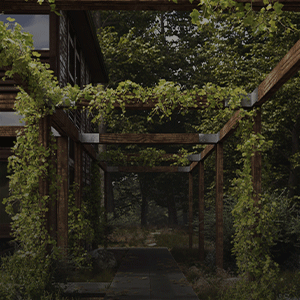CGPress uses technology like cookies to analyse the number of visitors to our site and how it is navigated. We DO NOT sell or profit from your data beyond displaying inconspicuous adverts relevant to CG artists. It'd really help us out if you could accept the cookies, but of course we appreciate your choice not to share data.
The technical storage or access is strictly necessary for the legitimate purpose of enabling the use of a specific service explicitly requested by the subscriber or user, or for the sole purpose of carrying out the transmission of a communication over an electronic communications network.
The technical storage or access is necessary for the legitimate purpose of storing preferences that are not requested by the subscriber or user.
The technical storage or access that is used exclusively for statistical purposes.
The technical storage or access that is used exclusively for anonymous statistical purposes. Without a subpoena, voluntary compliance on the part of your Internet Service Provider, or additional records from a third party, information stored or retrieved for this purpose alone cannot usually be used to identify you.
The technical storage or access is required to create user profiles to send advertising, or to track the user on a website or across several websites for similar marketing purposes.








Weak.
I think the problem is with the foam behavior and lack of enough foam particles and the way they are rendered, I didn’t check the tutorial but I suspect he may be using point foam particles instead of actual refractive spheres and not enough of them, coupled with compositing the layers doesn’t help with that fluid/foam integration that well.
Also lighting and shading not helping here.
PhoenixFD has some solid example files when it comes to waves and water, but I have always felt they need more work done on Foam out of the box, I can’t put my finger on it but comparing Houdini results there is something going on there.
I hope future tutorials tackles more complex wave sims than just boats, things like waves hitting shores crashing waves on rocks and so on. I know sample files exist but good to talk about them.
I have no knowledge of Phoenix whatsoever, maybe it’s a good package, I am only judging this movie: it looks super artificial, off-place, the noise pattern is off, the color is off, the animation is off. Houdini rules.
Artur you can be really harsh. RealFlow Rules!! The king of fluid. RealFlow!!
Not such a cut case, there is a fundamental difference between exporting fluid sims vs getting them done in the same package.
Realflow is also very expensive and also requires a time consuming workflow setup. Houdini is hard to grasp and also setup times + back and forth packages doesn’t help.
Phoenix by far beats Houdini and Realflow when it comes to ease of use and understanding and for max guys its number one choice for the simple reason that it is in package.
Phoenix is a powerful fast solver and capabilities lies somewhere between Realflow and Houdini.
The person working the tutorial does not show Phoenix’s better sides unfortunately, and that is partly for reason mentioned in these posts.
Here is a better example:
https://youtu.be/ebSjzJ7Th4A?t=53
That all may be, but I am only judging the content, not the tool…
Artue. So why mention the tool. If your only judging the content.
Arthur: “That all may be, but I am only judging the content, not the tool…” but in the previous comment: “Houdini rules!”
Thanks for the nice example but does anyone know how to set this up?
Houdini’s water system isn’t actually all that difficult to learn. Yes, there are definitely ways you can do very specific things that are fairly complex but in most scenarios you don’t need that granular control.
To do oceans, wakes, foam, complete control over velocities are not that hard for an average 3D artist. Features like narrow band are pretty easy and speed up simulation times massively when doing ocean simulations. They recently added another level of control over foam (17.5) that takes the realism even further.
If you’re always in Max, PhoenixFD is a good tool to get something out really fast. So while setting up a Houdini fluid simulations takes a bit longer, it’s not difficult. The SideFX/Houdini community is also incredibly generous when it comes to sharing files for others to learn from.
It should be fun to compare Bifrost/Board to Houdini’s toolset. What’s in Maya 2019 is very promising and something to look forward to if you’re sticking with Max.
Tough crowd 🙂 Any phoenix experts here with an opinion to improve this?
Hey,
Lowering the spaceship a bit and adding more grid resolution will create a better liquid interaction. Another thing that can be improved is the foam shading. In the tutorial he is using points, they look okay and render fast but tend to produce a bit flatter shading. What you can do is to either increase the Shadow strength in the Particle Shader or switch the render mode to Bubbles which will add reflections for the foam and will give it a bit more “depth”. Hope this helps 🙂
Cheers,
At least someone is being constructive here. I am really novice in Phoenix so I won’t comment. I do feel something is wrong with this sim. Does anyone know how to make it realistic, knows an example or wants to produce an example?
You could take a look at this tutorial here – https://docs.chaosgroup.com/display/PHX4MAX/Ship+in+the+Ocean
Its pretty bad, not sure where to start – except for from scratch. looks terrible and does phoenix a great disservice!
Not really helpful comment.
It’s easy to throw shit on other people’s work, why don’t you show something better you made?
In most fields its normal for teachers not to be masters in their craft, unless they’re teaching really high-end and advanced techniques, which this is not. Isn’t the intention of most tutorials to cover the principles and allow a student with talent and motivation to learn more and improve with their own effort? Sure, looking at this as a non-vfx guy, the lighting and foam shading looks off (toxic waste?) and too noisy/bitty, but to get someone started as a base from which to improve – maybe it serves its purpose? Especially if this is intended for an arch viz audience rather than the Allan McKay crowd?